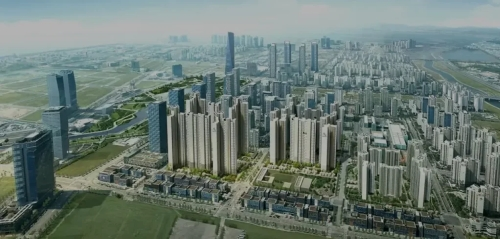As Pakistan’s capital continues to evolve, the Islamabad commercial real estate market is witnessing transformative growth. With urban expansion, infrastructure development, and a surge in business activities, 2025 is shaping up to be a pivotal year for commercial property investors. This article will explore the emerging property trends in Islamabad, market demand drivers, and investment opportunities across different zones.
Why Is Islamabad’s Commercial Property Market in High Demand?
Islamabad has long been known for being well-planned, secure, and administratively significant. But over the last few years, it has evolved from a bureaucratic center to a thriving business hub. Several factors drive the growth:
- Improved road and metro infrastructure
- Rising middle-class consumerism
- Expansion of IT, finance, education, and health sectors
- Innovative and smart city initiatives and real estate digitization
As a result, business property in 2025 is increasingly viewed as a stable and high-return investment opportunity.
Key Property Trends in Islamabad (2025)
Let’s dive into the top property trends reshaping Islamabad’s commercial landscape.

1. Shift Toward Mixed-Use Developments
Developers in Islamabad are increasingly focusing on vertical, mixed-use projects that integrate office, retail, and residential spaces within a single development. These all-in-one properties offer convenience, better space utilization, and enhanced rental income opportunities, making them highly attractive to investors and entrepreneurs. The trend is especially prominent in rapidly growing areas like Gulberg Greens, Blue Area, and DHA Phase 2. As urban density increases, such integrated developments will dominate the commercial landscape.

2. Demand for Smart Offices and IT Parks
As Islamabad solidifies its position as a growing hub for tech startups and software firms, the demand for modern, innovation-friendly office spaces is rapidly increasing. Businesses now seek environments with high-speed internet, cloud-based systems, innovative infrastructure, and flexible co-working options. These features are no longer luxuries—they’re expected standards in today’s competitive commercial landscape. Notable areas catering to this demand include I-9, H-13, and G-11, where developers align with the needs of a tech-driven economy.

3. Expansion of Peripheral Commercial Zones
While traditional commercial hubs like Blue Area and F-6 continue to command premium rates, a noticeable shift is occurring toward Islamabad’s peripheral sectors. Areas such as Bahria Town, B-17, and Top City-1 are gaining traction among savvy investors seeking long-term growth. Improved road connectivity, upcoming infrastructure projects, and significantly lower entry costs make these zones increasingly attractive. These emerging areas offer promising returns, especially for those willing to invest early in the development cycle.
Industry Drivers Fueling Commercial Demand
Understanding which industries shape the property landscape helps investors make more intelligent choices.
- IT and Tech: Fueling demand for co-working spaces and innovation hubs.
- Retail: Shopping malls, high-street shops, and showrooms are expanding rapidly.
- Health and Wellness: Clinics, labs, and wellness centers are growing in G sectors and DHA.
Education: Demand for campuses and training centers is rising in the outskirts.
Top Sectors for Business Property Investment in 2025
Here are Islamabad’s high-potential sectors for business property in 2025:
Sector | Description | Investment Potential |
Blue Area | Central commercial hub with corporate offices & banks | High |
DHA Phase 2 | Growing business district with mixed-use properties | Medium-High |
Gulberg Greens | Fast-developing with modern infrastructure and mixed-use appeal | High |
G-11 & F-10 Markaz | Established foot traffic, ideal for retail and clinics | Medium |
Bahria Town & B-17 | Lower prices, high long-term appreciation potential | Medium |
2025 Market Forecast: What Investors Should Expect
According to recent market data, the Islamabad commercial real estate market is expected to grow at an annual rate of 7–10% through 2025. Key factors contributing to this forecast include:
- Continued urban sprawl and migration to Islamabad
- CPEC-driven economic activity and trade
- Increased foreign investment and commercial leasing
Prices are expected to rise, especially in peripheral zones, where infrastructure development is catching up rapidly.
Conclusion
The Islamabad commercial real estate market is positioned for healthy growth in 2025. Whether you’re a first-time investor or expanding your portfolio, now is the time to explore high-yield commercial assets across CDA sectors, DHA, and upcoming developments.
Is Now the Right Time to Invest?
Are you ready to invest wisely? Get expert guidance from professionals who know the market inside out. Visit Chakor Ventures for personalized property advice and listings in Islamabad’s top-performing zones.
Sources:
- Zameen.com Market Reports 2024–2025
- Pakistan Bureau of Statistics
- Islamabad Chamber of Commerce & Industry
